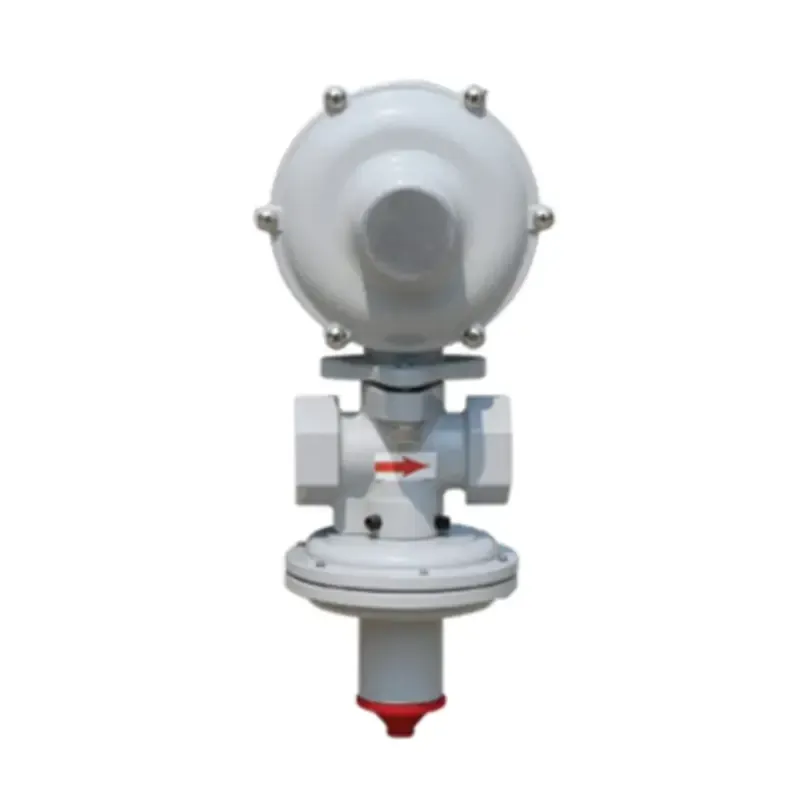
Dec . 12, 2024 06:13
Back to list
Understanding the Function and Benefits of Pressure Reducing Regulators in Systems
Understanding Pressure Reducing Regulators A Key Component in Fluid Control Systems
Pressure reducing regulators are essential devices used in various applications to control and maintain the pressure of liquids and gases within a specified range. These devices help safeguard equipment, regulate flow rates, and ensure safety in systems where pressure fluctuations can lead to operational issues or hazards.
How Pressure Reducing Regulators Work
The primary function of a pressure reducing regulator is to reduce a higher inlet pressure to a lower outlet pressure. This is achieved through a mechanical mechanism often involving a diaphragm, a spring, and a valve. When the higher upstream pressure acts on the diaphragm, it pushes against the spring force, causing the valve to modulate its position. As the downstream pressure reaches the preset level, the diaphragm moves to close the valve partially, thus maintaining the desired outlet pressure despite variations in the inlet pressure.
This device operates according to the principles of fluid mechanics, relying on the relationship between pressure, flow rate, and resistance. By regulating the flow area with the valve's position, pressure reducing regulators ensure that downstream systems receive a steady and consistent pressure level.
Applications of Pressure Reducing Regulators
Pressure reducing regulators are widely used in numerous industries, including
1. Oil and Gas In the oil and gas sector, these regulators are crucial for controlling pipeline pressures, preventing overpressure that could lead to leaks or ruptures.
2. HVAC Systems In heating, ventilation, and air conditioning (HVAC) systems, regulators maintain optimal pressure for heating and cooling processes, ensuring efficient energy use and system longevity.
3. Manufacturing Many manufacturing processes, such as those involving pneumatic tools, require specific pressure levels for optimal operation. Regulators ensure that equipment operates safely and efficiently by maintaining these pressures.
pressure reducing regulators

4. Medical Equipment In healthcare, pressure reducing regulators are used in tanks for gases like oxygen and nitrous oxide, ensuring safe and controlled delivery for medical applications.
5. Food and Beverage Industry These devices help maintain consistent pressure in processes like bottling and carbonation, ensuring product quality and process efficiency.
Benefits of Using Pressure Reducing Regulators
The use of pressure reducing regulators provides several advantages
- Enhanced Safety By preventing overpressure situations, these devices significantly reduce the risk of leaks or failures in equipment.
- Process Efficiency Maintaining consistent pressure leads to improved performance and efficiency in various applications, helping save energy and reduce operational costs.
- Equipment Protection Regulators protect downstream equipment from damage caused by excessive pressure, thereby extending their lifespan and reducing maintenance costs.
- Reduced Downtime With steady pressure control, systems experience fewer fluctuations that can lead to downtime, improving overall productivity.
Conclusion
In summary, pressure reducing regulators are vital components in many industries, playing a crucial role in the safe and efficient management of fluids. Their ability to maintain consistent pressure not only enhances safety but also optimizes performance and prolongs the life of equipment. Understanding the working principles and benefits of these regulators is essential for anyone involved in design, operation, or management of fluid control systems. As technology continues to advance, the development of more efficient and reliable pressure reducing regulators will undoubtedly enhance their effectiveness across various applications, reinforcing their critical role in fluid dynamics.
Next:
Latest news
-
Safety Valve Spring-Loaded Design Overpressure ProtectionNewsJul.25,2025
-
Precision Voltage Regulator AC5 Accuracy Grade PerformanceNewsJul.25,2025
-
Natural Gas Pressure Regulating Skid Industrial Pipeline ApplicationsNewsJul.25,2025
-
Natural Gas Filter Stainless Steel Mesh Element DesignNewsJul.25,2025
-
Gas Pressure Regulator Valve Direct-Acting Spring-Loaded DesignNewsJul.25,2025
-
Decompression Equipment Multi-Stage Heat Exchange System DesignNewsJul.25,2025

